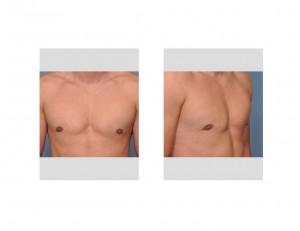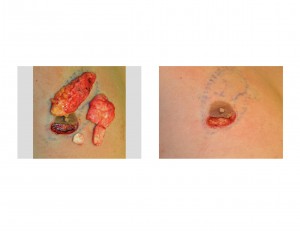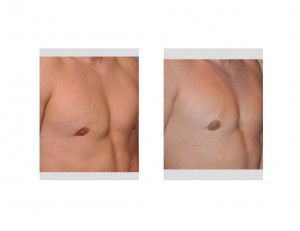Background: The treatment of certain types of gynecomastias employs the use of direct excision. Direct excision may be combined with liposuction but the dense tissue of some gynecomastias does not respond well to liposuction alone. Unlike liposuction, however, directly cutting out male breast tissue underneath the nipple can easily be overdone and too much can be removed. There is an experience and art form to know just what is the right amount to remove to have a good result but not enough to cause a secondary contour deformity.
Over resection of gynecomastia is often not immediately apparent and only appears when the swelling has gone down. As healing sets in, the nipple may be pulled downward with scar contracture. This results not only in nipple inversion but the nipple may be distorted with certain arm movements due to the scar bands between the nipple and the deeper tissues.
Revision of over resected gynecomastia is different than underresected gynecomastia. It illustrates that it is always easier to remove tissue than it is to add tissue. Nipple inversion from gynecomastia requires a release and tissue fill. The question is what material is best to fill in the defect.



Case Highlights:
1) Over resection of gynecomastia causes a chest wall deformity consisting of nipple inversion and scar contracture.
2) Revision of a gynecomastia inverted deformity requires some form of tissue fill. This is best done with a dermal-fat graft or an allogeneic dermal graft. Synthetic materials, while having initial good results, will ultimately develop contracture and unnatural hardness.
3) Dermal-fat grafts can be harvested from most abdominal scar sites or along the lower buttock crease.
Dr. Barry Eppley
Indianapolis Indiana


